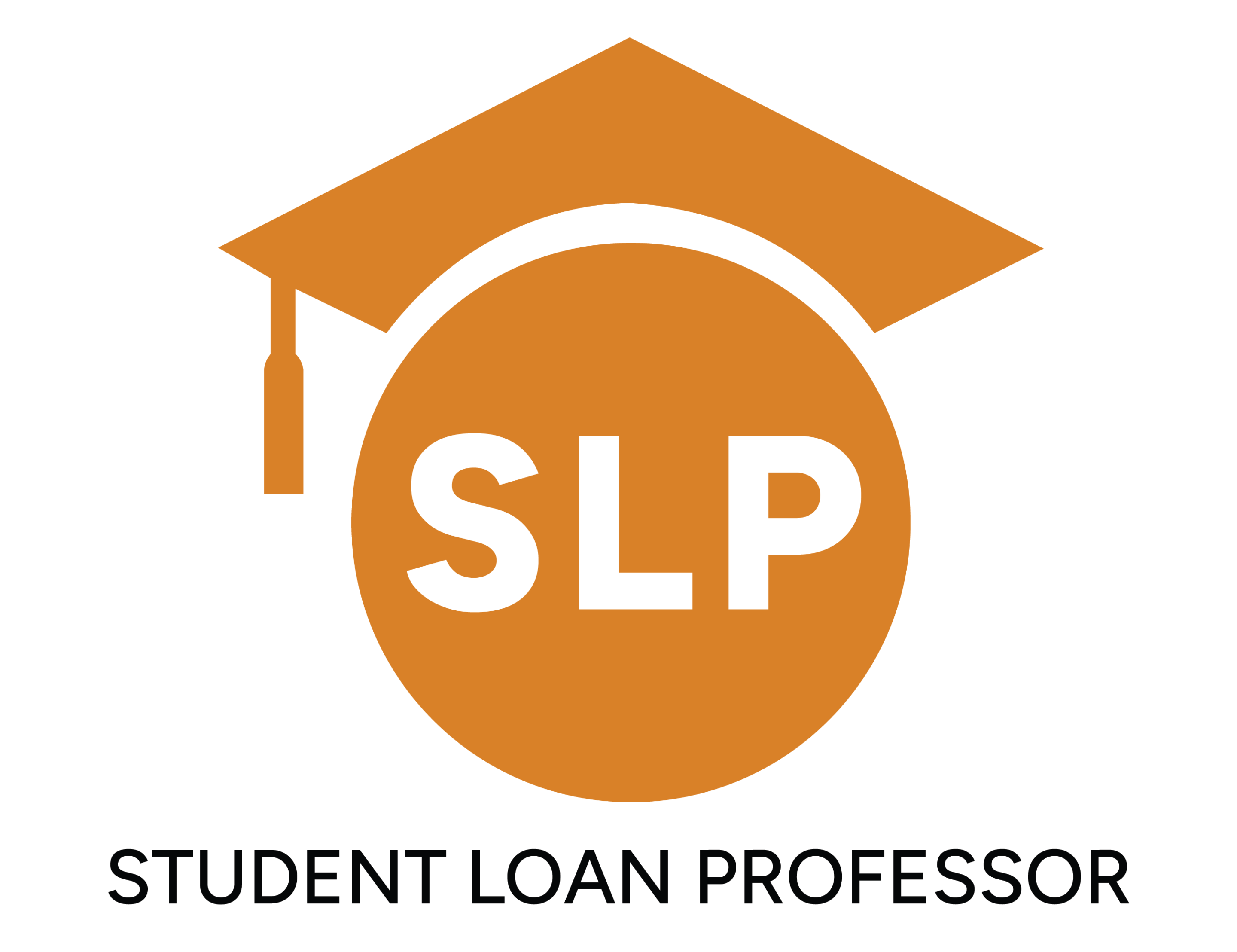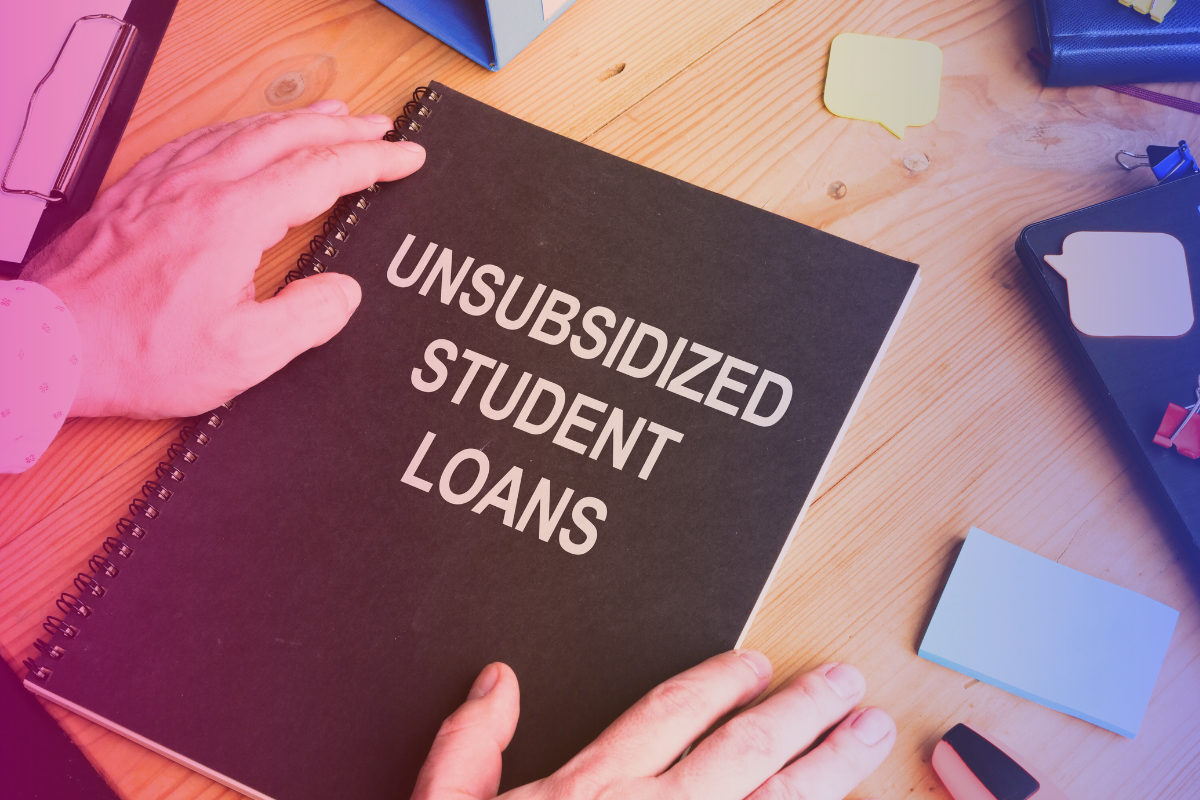Key Takeaways
- Unsubsidized loans accrue interest from disbursement, regardless of student financial need.
- Higher borrowing limits are available, especially for graduate and professional students.
- Eligibility requires U.S. citizenship, good academic standing, and FAFSA completion.
- Unsubsidized loans offer federal protections but lack interest coverage while in school.
What Is An Unsubsidized Student Loan?
An unsubsidized student loan is a federal loan provided through the U.S. Department of Education’s Direct Loan Program. It’s available to all students, whether undergraduate, graduate, or professional.
Anyone who wants to continue their education can apply for unsubsidized federal student loans without having to prove their financial need, as long as they meet specific criteria.
If you’re considering applying for an unsubsidized loan, the main thing you should know is that interest starts accruing from the time the loan is disbursed.
Payment for unsubsidized loans can be deferred until after graduation. Should you choose to later enroll in a graduate program, both old and new unsubsidized loans will also be deferred during that enrollment as well.
Interest will still accrue during all periods of enrollment, however, which must be paid eventually. This is the main thing that sets unsubsidized loans apart from subsidized federal loans.
Subsidized Vs. Unsubsidized Loan
When choosing between subsidized and unsubsidized loans, the key considerations are how interest is handled and the eligibility requirements.
With subsidized loans, the federal government covers the interest while you’re in school, during the grace period, and any deferment. In contrast, unsubsidized loans start accruing interest immediately after disbursement, which means you’ll likely end up paying more in the long run.
For eligibility, subsidized loans are only available to undergraduate students who can demonstrate financial need, while unsubsidized loans are available to all students, regardless of financial need.
Eligibility Criteria for Unsubsidized Student Loans
Whether you’re applying for a subsidized or unsubsidized loan, you must first complete a FAFSA (the Free Application for Federal Student Aid). This form determines whether you’re eligible for any kind of financial aid from the federal direct loan program.
Once you complete the FAFSA, your school will calculate how much you are eligible to borrow.
However, to successfully get an unsubsidized loan, you’ll need the following eligibility criteria:
- You must be enrolled at least half-time as a regular student at a federal aid-eligible college or university.
- A high school diploma, GED, or equivalent (such as meeting state homeschooling requirements) is required.
- You need to be a U.S. citizen or permanent resident to qualify for federal loans.
- Remain in good academic standing.
- You must make progress toward completing your degree within 150% of the standard time frame. For example, in a four-year program, you should aim to complete it within six years to stay eligible.
- You cannot be in default on any existing student loans.
How Much Can You Borrow With An Unsubsidized Loan?
A major benefit of direct unsubsidized loans is their higher borrowing limits compared to subsidized loans.
However, like any federal student loan, they have an annual loan limit (per academic year) and an aggregate loan limit (total loan amount).
The amount you can borrow through direct unsubsidized loans depends on your year in school and dependency status.
- Dependent Undergraduate Students: Can borrow between $5,500 and $7,500 per year, with a lifetime limit of $31,000, of which no more than $23,000 can be subsidized.
- Independent Undergraduates: Higher limits range from $9,500 to $12,500 per year, with a lifetime limit of $57,500, of which no more than $23,000 can be subsidized.
- Graduate or Professional Students: The annual limit is $20,500, and the total limit is $138,500, including any undergraduate loans.
Unsubsidized Loan Interest Rates
When taking out an unsubsidized loan, it’s crucial to understand how interest accrues. Unsubsidized loans have fixed interest rates and simple interest accrual. Rates are set each May for the following academic year, based on 10-Year T-bill rates.
For loans disbursed after July 1, 2024, and before July 1, 2025, the interest rates are:
- Undergraduates: 6.53% (fixed)
- Graduate and Professional Students: 8.08% (fixed)
- Doctorate-level Healthcare Students: The annual limit is typically $40,500. This may reach as high as $49,000 at some schools which have longer terms or require summer attendance.
These rates remain fixed for the duration of the loan, though interest starts accruing right away, even while you’re in school or during deferment.
You should try to manage this interest early on to keep your total loan balance under control after finishing your studies. One thing many students do is make small loan payments equal to the interest amount during their studies.
Pros and Cons of Unsubsidized Loans
Pros
- No Financial Need Requirement: Unlike a subsidized loan, unsubsidized financial aid is available to all students, regardless of their financial situation.
- Higher Borrowing Limits: You can borrow more money than with a subsidized loan, especially as a graduate or professional student.
- Federal Protections: Unsubsidized loans are eligible for income-driven repayment plans, deferment, and forbearance, which gives you more repayment flexibility.
Cons
- Immediate Interest Accrual: Interest starts accruing as soon as the loan is disbursed, which can increase your debt.
- Higher Long-Term Costs: If interest isn’t paid while in school, it is added to the principal, leading to more significant repayment amounts.
Unsubsidized Loans vs. Private Student Loans
If you’re not eligible for a federal loan, whether unsubsidized or direct subsidized loans, another option you can try is private loans.
The biggest differences between unsubsidized federal loans and private student loans are in their interest rates, eligibility criteria, and repayment options.
Unsubsidized loans offer fixed interest rates, while private loans often have variable rates that depend on market conditions and the borrower’s creditworthiness. This is because banks or private lenders provide private loans while the government offers federal loans.
Another critical distinction is eligibility. Unsubsidized loans are available to professional, undergraduate, and graduate students regardless of credit history. Private loans, on the other hand, typically require a strong credit score or a cosigner.
It’s also important to remember that unsubsidized loans can be eligible for benefits like income-driven repayment plans, deferment, forbearance, and Public Service Loan Forgiveness (PSLF). These don’t apply to private loans, so you’ll be required to pay them in full.
Typically, students turn to private loans if they cannot qualify for direct subsidized or unsubsidized aid.
Let’s Maximize Your Financial Aid with Unsubsidized Loans
Choosing the right financial aid option is a big step. If you’re trying to decide between private, subsidized, and unsubsidized loans, book a consultation with StudentLoanProfessor.
We’ll help you choose the best loan to suit your plans, goals, and financial status.
Brandon Barfield is the President and Co-Founder of Student Loan Professor, and is nationally known as student loan expert for graduate health professions. Since 2011, Brandon has given hundreds of loan repayment presentations for schools, hospitals, and medical conferences across the country. With his diverse background in financial aid, financial planning and student loan advisory, Brandon has a broad understanding of the intricacies surrounding student loans, loan repayment strategies, and how they should be considered when graduates make other financial decisions.



![Our Honest Thoughts On Aidvantage Student Loans [For 2025]](https://www.studentloanprofessor.com/wp-content/uploads/2024/10/SLP_fallback_2-no-logo-400x250.jpg)

